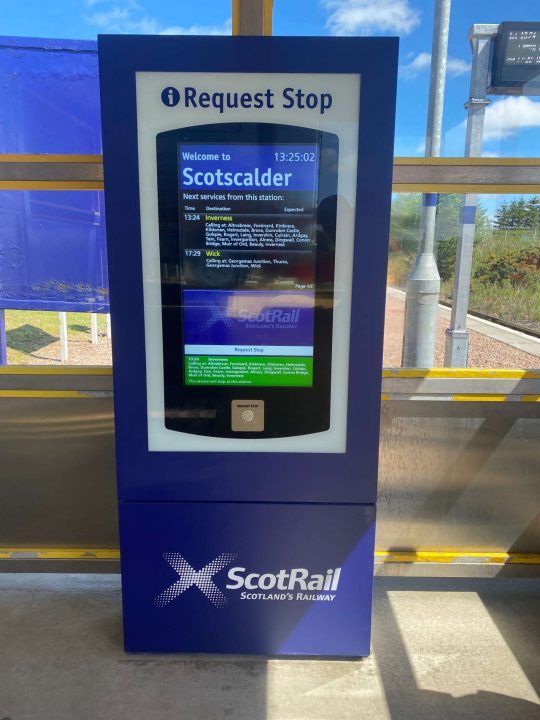As announced last year, Scotscalder railway station on the Far North Line will have the first request stop kiosk put in place on the 15th August.
The kiosk, which is the first of eight, will allow passengers to access the next service electronically without needing to hand signal the driver.
These kiosks are a part of a bigger £5 million investment in the lines signalling system and will improve request stop stations.
Depending on whether the trial is successful or not, the kiosks will be placed at Altnabreac, Kinbrace, Kildonan, Dunrobin Castle, Rogart, Invershin and Culrain over the next few months.
While passengers can use the radio system to message the driver to request the stop, once on the train, passengers still need to communicate to the guard whether they wish to alight at a request stop.
The trial location will be monitored regularly to ensure all runs smoothly and information will be on the platform for passengers to see about the changes.

Cara Healy, Network Rail’s development manager for the work on the Far North Line, said: “Enhancing the radio network will make the experience of using request-stop stations more straight forward for local people and for the increasing number of tourists visiting the area.
“Once the trial-period is complete at Scotscalder, we are confident that the system will be ready to be rolled out to improve performance and the overall passenger experience for those travelling on the railway.
“This new system will make it easier to use some of the most remote stations on our network and hopefully help encourage more people to travel into the Highlands to walk, climb, cycle and sightsee.”
David Simpson, ScotRail Service Delivery Director, said:
“We are delighted to welcome request-stop kiosks on to the network with the improvements they will offer to our passengers using this rural line.
“Enabling the driver to be alerted in advance to the need to stop in the station, rather than being reliant on hand-signalling, delivers a safer and more reliable system, and means that trains don’t need to slow down at stations where there are no passengers waiting.
“This will improve performance and it’s a really positive step for the operation of the route.
“We look forward to a successful trial and the technology being rolled out to other stations on the Far North Line.”






Responses